ADSactly Literature -THE FEATHER PILLOW: A HORROR STORY
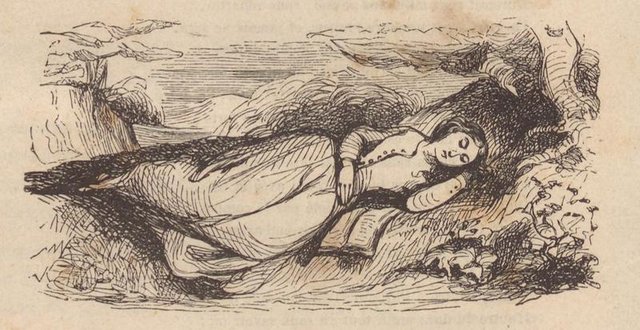
THE FEATHER PILLOW: A HORROR STORY
Within universal literature there are many texts that have been considered frightening over the years. To speak of "The Walker" by Charles Dickens, "The Horla" by Guy de Maupassant, "He Who Whispers in the Dark" by Lovecraft or "The Empty House" by Blackwood is to speak of suspense and terror. So it is with some writers, who are or were characterized because almost all of their work was inspired by terror and fear. Examples of my previous statement are the authors Edgar Allan Poe, Lovecraft, Bram Stoker, Mary Shelley and, more recently, Stephen King, who is not only known for his extensive horror writings, but also because many of his stories have been taken to the movies.
If there is one Latin American writer who worked very well on horror, it was Horacio Quiroga. This Uruguayan writer is considered one of the best Spanish storytellers. His style allowed him to masterfully narrate the violence and horror hidden behind the apparent sweetness of nature and people. His first attempts were imitations of Poe, with whom he shared a special preference for violence and madness; later he stands as one of the most genuine and funerary voices of our literature. It must be said that tragedies marked the life of this writer: his father died in a hunting accident; Quiroga also accidentally shot his friend Federico Fernando; also his stepfather and his first wife committed suicide and he himself committed suicide drinking a glass of cyanide.
Among Quiroga's best-known works are: "La gallina degollada", "Anaconda", "El alambre de púa" and, above all, the story "El almohadón de plumas". I will talk about this story in this post.
The Feather Pillow narrates the life of a couple formed by Alicia and Jordán, newlyweds. One day Alicia begins to develop a disease that worsens her health every day and confines her to bed. The doctor wants to cure her, but he doesn't even know what she has. After a few days of agony, Alicia dies. After Alicia's death, the maid, when fixing the woman's bed, finds blood stains on the cushion, calls Jordan and together they discover that there was an animal hidden in the feather cushion and that he was responsible for Alicia's death, since during the night he sucked her blood.
In this story, like most good horror texts, we are impressed by the ending, not only because of the macabre but also because of the real, because of how credible the story can be. In the story we see how Alicia's character is deteriorating, but we will never imagine that the enemy is in his bed. Let's start the analysis:
From the first paragraph, the omniscient narrator describes the profile of Alice and Jordan, and how was the marriage of both:
I think that the description of these characters is fundamental, not only because they are the main characters, but also because from the beginning we can form an idea of the relationship between them and the character of each one. It is from there that we can intuit that Alicia was a young and delicate woman, even with a certain fear of her husband, who was not very effusive and talkative. Another of the first descriptions made by the narrator is that of the house, the only space where all the actions of the characters will take place:Her honeymoon was a long shiver. Blonde, angelic and shy, her husband's harsh character froze her dreamed-up bridal childhoods. She loved him very much, however, sometimes with a slight shudder when, returning at night together in the street, she took a furtive look at the tall stature of Jordan, who had been mute for an hour. He, for his part, loved her deeply, without making it known.
The house in which they lived had a little influence on their shivering. The whiteness of the silent courtyard - friezes, columns and marble statues - produced an autumnal impression of an enchanted palace. Inside, the glacial shine of the stucco, without the slightest scratch on the high walls, affirmed that sensation of unbearable cold. Crossing from one piece to another, the steps echoed throughout the house, as if a long abandonment had sensitized its resonance.
The house of marriage, by the characterization that the narrator makes, we understand that although inhabited, it is a solitary house, cold, with adverse atmosphere. We must remember how fundamental is the description of the environment in narrative texts (novels and stories), since many of them influence the development of events and the behavior of the characters. Generally, when we speak of the house, we believe we are present before a family space, welcoming, safe. A place where the characters should be safe. From the description given to us by the narrator, we understand that this is not the case in this story. This house is a disturbing and hostile place.
Shortly after the marriage, overnight, one begins to observe the deterioration in Alicia's health, initially attributed to her young and delicate nature, and perhaps to the marriage itself:It's not uncommon for her to lose weight. She had a slight attack of influenza which dragged itself insidiously for days and days; Alice never recovered. Finally one afternoon she was able to go out into the garden leaning on his arm. She looked indifferently from one side to the other. Suddenly Jordan, with deep tenderness, put his hand over his head, and Alice immediately broke into sobs, throwing her arms around his neck. She cried for a long time in all her quiet terror, doubling her crying at the slightest attempt at caressing. Then the sobs slowed down, and she remained hidden in her neck for a long time, without moving or saying a word.
That was the last day Alicia was awake. The next day she dawned faded.
If there is one thing that calls the attention of this story is that there is almost no dialogue in it. We especially observe the little communication between the newlyweds, an attitude that reinforces the barrier that we perceive between us. In the previous quotation we see an extremely fragile Alice, not only physically, but also spiritually; she feels helpless, upset. We see that even before so much sadness and discomfort, there are no words of comfort in the couple. At this point, Alice's illness has an irreversible air:
The dialogue above is one of the few we are going to read in this story, and it is between Jordan and the doctor, who, as we can see, fails to find the nature of Alice's illness. That is why, seeing the accelerated deterioration of the girl's health, other doctors are asked to give their opinion:Jordan's doctor examined her very carefully, ordering her absolute calm and rest.
"I don't know," he said to Jordan at the street door, his voice still low. "She has a great weakness that I cannot explain, and without vomiting, nothing... If tomorrow she wakes up like today, call me immediately.
The doctors came back uselessly. There was in front of them a life that was ending, bleeding day by day, hour by hour, without absolutely knowing how. At the last consultation Alice lay in astonishment as they pulsed her, her inert wrist passing from one to the other. They watched her for a long time in silence and followed her to the dining room.
The narrator's description of the unsuccessful attitude of the doctors and Alicia's state of health is quite significant. He tells us about the prostrate way in which the woman finds herself and the waste of energy, but on the other hand he shows us the lack of hope that there is in the doctors to find a cure for her illness:
Just as at the beginning the house is seen as a negative place, so we begin to visualize the room and very specifically the bed where lies the body, increasingly anemic, of Alice. The narrator shows us the bed as a space where the sick woman is almost evicted and tells us about time, how between night and morning life is gone. It is important to point out that due to the illness, Alicia is immobile in bed and does not allow anyone to move her or change the sheets.Alicia was extinguished in her delirium of anemia, aggravated in the afternoon, but that always remitted in the first hours. During the day his illness did not progress, but every morning it dawned livid, almost syncope. It seemed that only at night his life was lost in new wings of blood. When she woke up, she always had the sensation of being collapsed in bed with a million kilos on top of her. From the third day this sinking did not abandon her any more. She could barely move her head. She didn't want to be touched on the bed, not even to have her pillow fixed. His twilight terrors advanced in the form of monsters that crawled to the bed and climbed the bedspread with difficulty.
After weeks, we see how the anticipated outcome is present: Alicia dies. But this ending is not what will frighten the reader, but the finding that the maid will make after Alicia's death and after she tries to clean the room, very specifically the bed.
When the maid is going to remove the sheets from the bed, she notices that in the pillowcase there are two dark spots that resemble the bite of an animal. When she takes the weight of the pillow, she realizes that it weighs a lot. A little frightened, she informs Jordan about the weight of the pillow:This story has a very interesting particularity and that is that the reader's fear is not unfounded or fictitious, because indeed, the feathers of animals can create certain external parasites that function as mites, ticks, lice, fleas, which feed on the blood of the animal. In other words, perhaps, dear reader, the same thing that happened to me when I first read this story will happen to you. Every time I saw and felt the softness, the comfort, of a good goose feather pillow, I immediately remembered the high possibility that there were small animals making life inside the pillow and that night after night they could bleed me out. Thank God there are latex, viscoelastic and fiber pillows.They went out with him, and on the dining table Jordan cut a sheath and a sheath. The upper feathers flew, and the maid gave a shout of horror with her mouth wide open, carrying her twitchy hands to the bandits. On the bottom, between the feathers, slowly moving the hairy legs, there was a monstrous animal, a living, viscous ball. It was so swollen that his mouth was barely pronounced.
Night after night, since Alice had fallen into bed, he had stealthily applied his mouth - or rather, his trunk, - to her temples, sucking her blood. The bite was almost imperceptible. The daily removal of the cushion had undoubtedly prevented her development, but since the young woman could not move, the suction was dizzy. In five days, in five nights, she had emptied Alice.
These bird parasites, tiny in the usual environment, come to take on enormous proportions under certain conditions. Human blood seems to be particularly favourable to them, and it is not uncommon to find them on feather pillows.
And this is the real and plausible end of The Feather Pillow: an animal, which can be housed in the feathers of birds and which was inside the pillow, had sucked Alicia's blood night after night until it was empty and without a heartbeat.
I hope you liked the story and remember to vote for @adsactly as a witness and join our discord, where you will surely find nice people with whom you can talk about interesting topics. Until the next smile;)
BIBLIOGRAPHICAL REFERENCES
https://ciudadseva.com/texto/el-almohadon-de-plumas/ https://es.wikipedia.org/wiki/El_almohad%C3%B3n_de_plumas
Written by @nancybriti
Click on the coin to join our Discord Chat

Witness proposal is here:
Go To Steem Witness Page
In the bottom of the page type: adsactly-witness and press vote.

Use small letters and no "@" sign. Or, click here to vote directly!
Thank you!

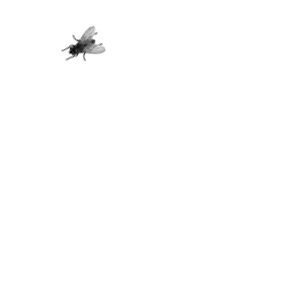
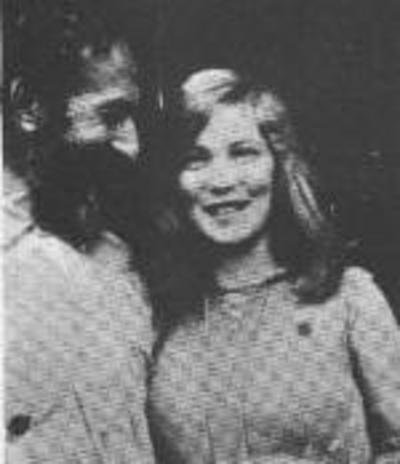
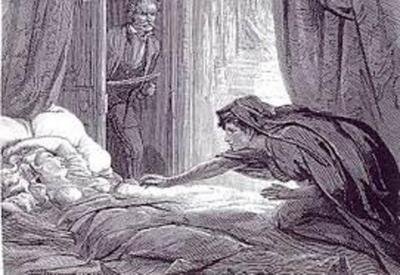
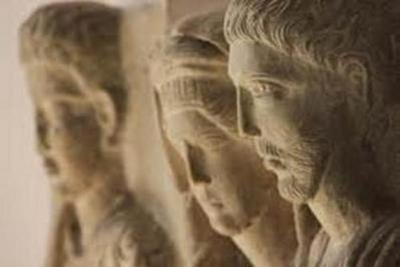

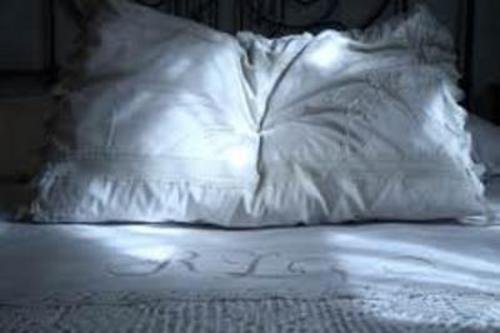
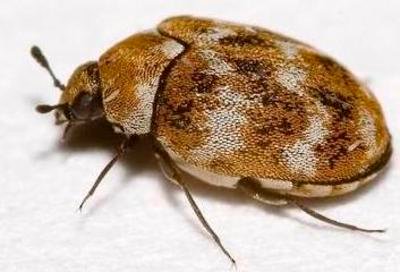
The prose of Horacio Quiroga is deliberately simple, without any affectation, in order to lead his reader towards a calmly horrifying outcome. If this tale is considered one of the most famous of all South American fantasy literature, you still have to agree on the very notion of fantasy and that of Quiroga - without any roughness or scandal that reason would oppose - like a writer who lives even for a network of demonic forces and deafeningly disturbing.
First and foremost, happy Halloween @nancybriti.
Well written text.
Well there are many great writers with great skills as you have just mentioned. It's obvious that most of this writers gain experience from there past and present life which enables them to come up with a great write up.
Well I just pray that they won't be any feathers on my pillow as I sleep, lol I can't dare to imagine that I'll just die without anyone knowing what happened. Now I'm really scared.
Jajaja. Happy halloweem! Although it is just a story, there are really microorganisms that can damage your skin and even suck your blood as happened to Alicia. Greetings
Hmmm i am never a fan of terror or horror, it makes me too scared, so i avoid everything about it... The stories about how the father and those who are related to him is scary. The reason i don't fancy anything that has terror or horror in it.
Reading it alone brings fear in me but maybe after this review here i could change my mind, although i am not certain about it, but i will try my best to read through it. I just need the mind and courage to read this. 😂😂
Terror isn't my favorite genre either! But we must always be open to new readings and new experiences, even if they frighten us. Greetings
Really, the life of Horacio Quiroga was developed in the middle of a permanent tragedy. This marked him seriously and can be evidenced in his work. In his texts the leitmotiv is the tragic, the death. In the feather cushion the cause of death is stealthy, hurting from inside the pillow without anyone suspecting anything. It is a frightening story. One of the works of Quiroga that caused me the most terror is his story The chicken slaughtered because death appears in an abominable way. I recommend your reading. @nancybriti has made an excellent contribution bringing in these days of fear the work of this writer who worked the tragedy and terror masterfully.
Thank you, @aurodivys, for your comment! It's true, Quiroga's life was marked by tragedy, perhaps from there so much darkness in their stories. I also like La gallina degollada, especially how the author works there the characters, the time and the atmosphere. The psychological terror itself. Greetings.
@adsactly sir!
A halloween story of Jordan and Alicia. Alicia's disease seemed unusual. The doctors were also unable to do the treatment. The worst situation would have been the maid because she had seen blood stains on the feather pillow. The animal living in the vicinity was absolutely vampire, who forced Alicia to die sucking her blood.A horrible Halloween story.
Have a Halloween week. thanks
You made a good summary of the story. Thank you for your comment. Happy halloween.
Lol I have always preferred feather pillows, they are more comfortable for me, but after your message, I will seriously examine the latex pillow
Yeah, that'd be good. I did! Thank you for commenting.
To listen to the audio version of this article click on the play image.

Brought to you by @tts. If you find it useful please consider upvoting this reply.
esta demasiado brutal esta historia (Y) que buena enserio
Thank you
Oh oh. Actually I hate frightening images as it makes me afraid and sometimes I tend to have bad dreams. The story was interesting
Posted using Partiko Android
I think the same thing happens to all of us, @adenijiadeshina.